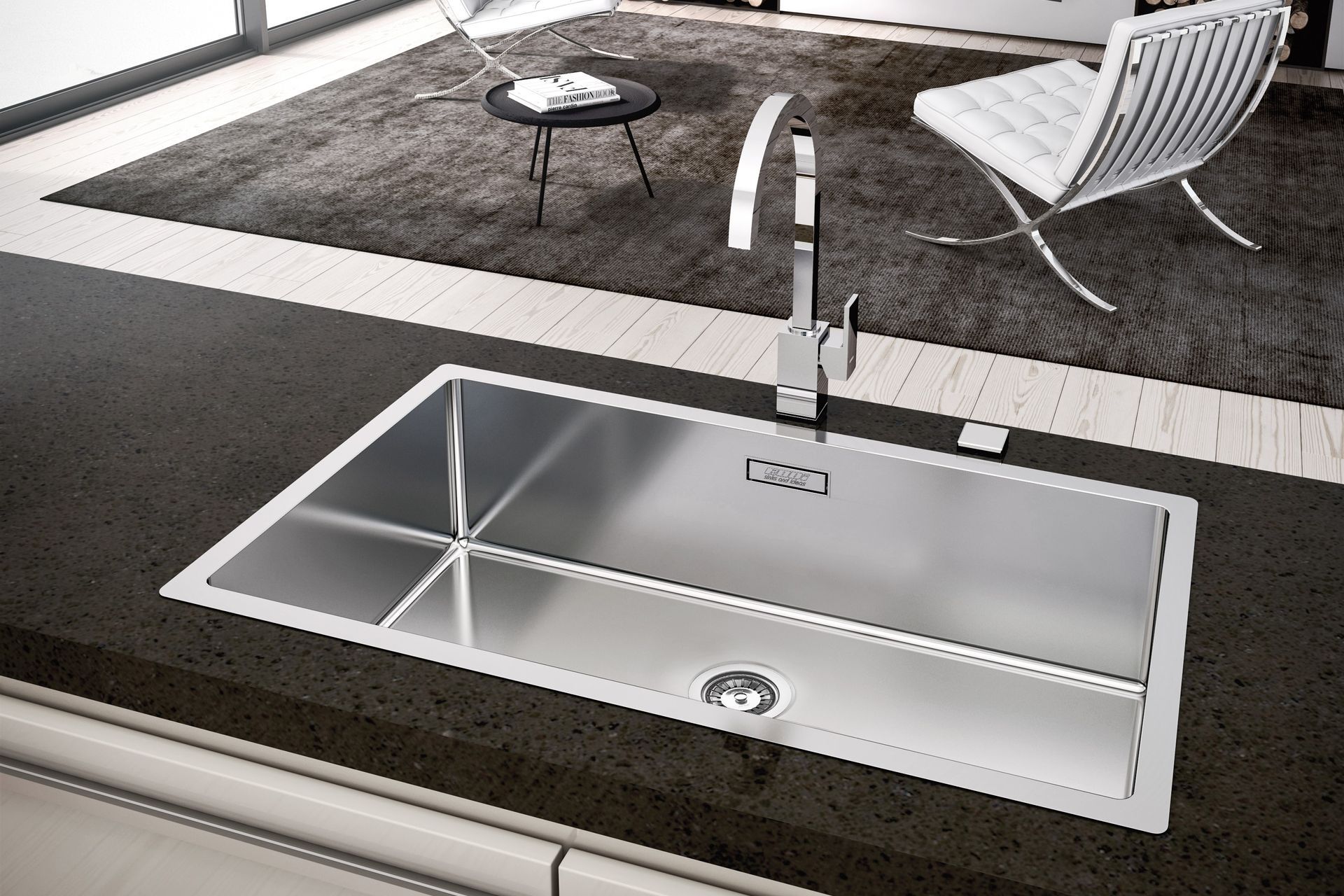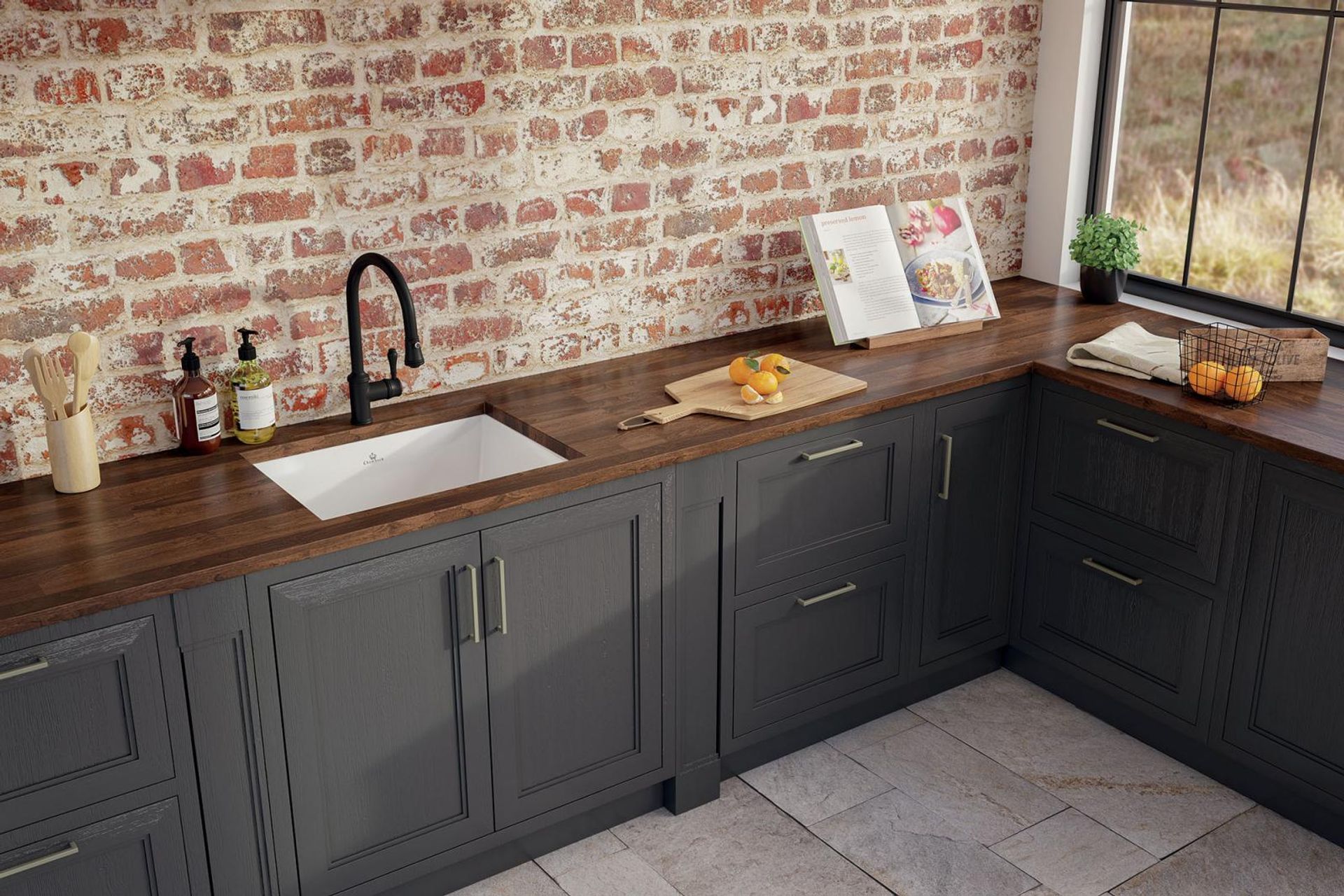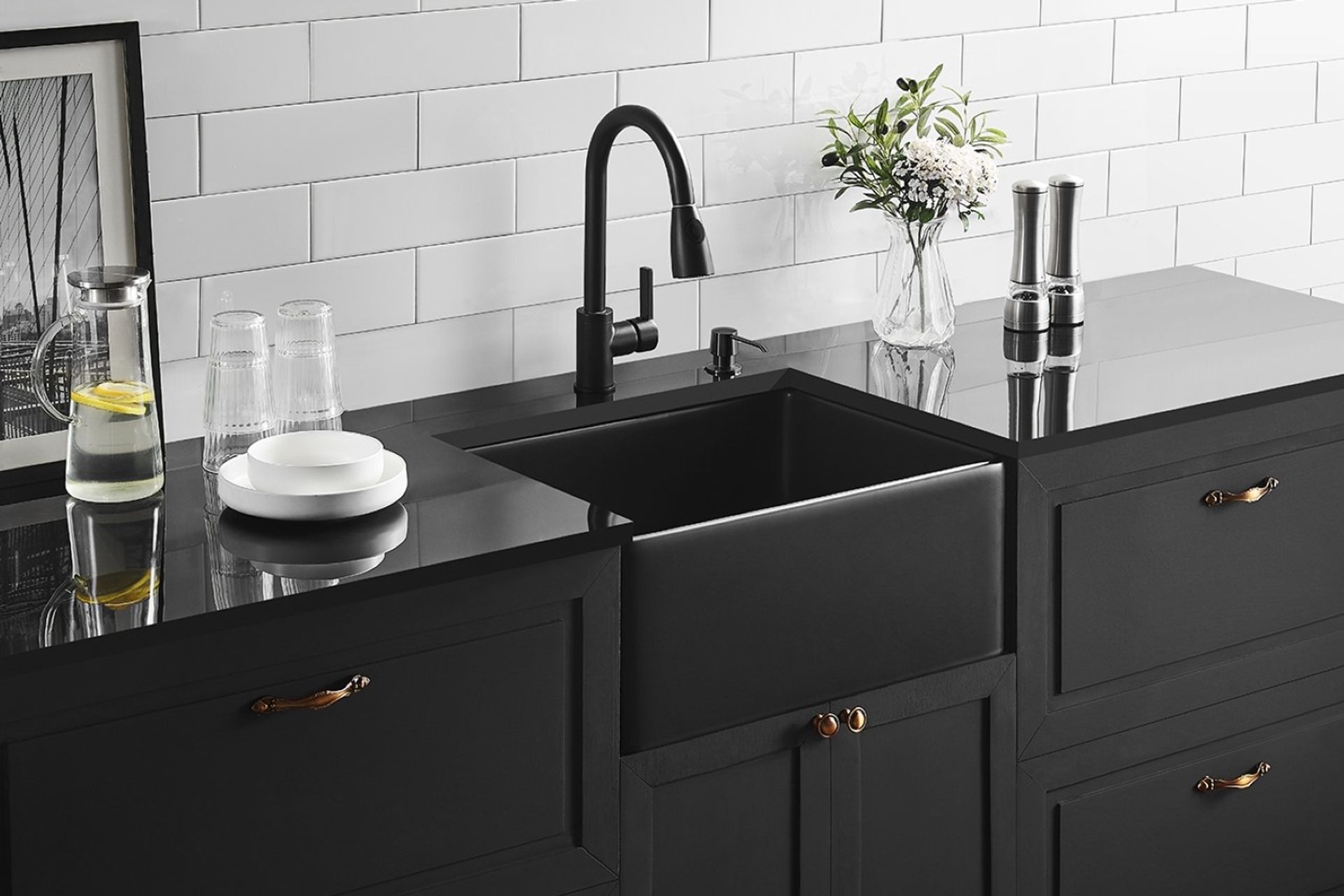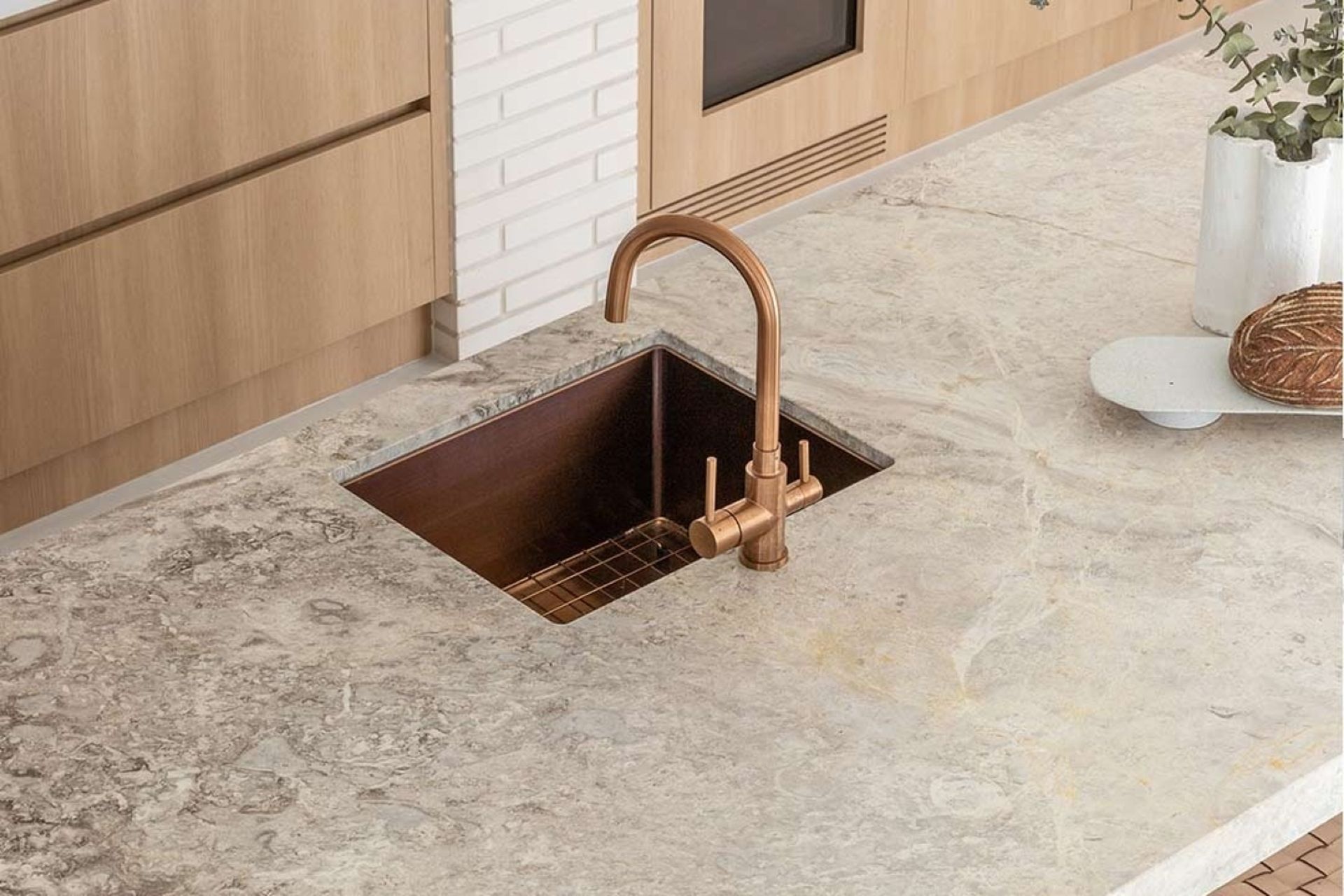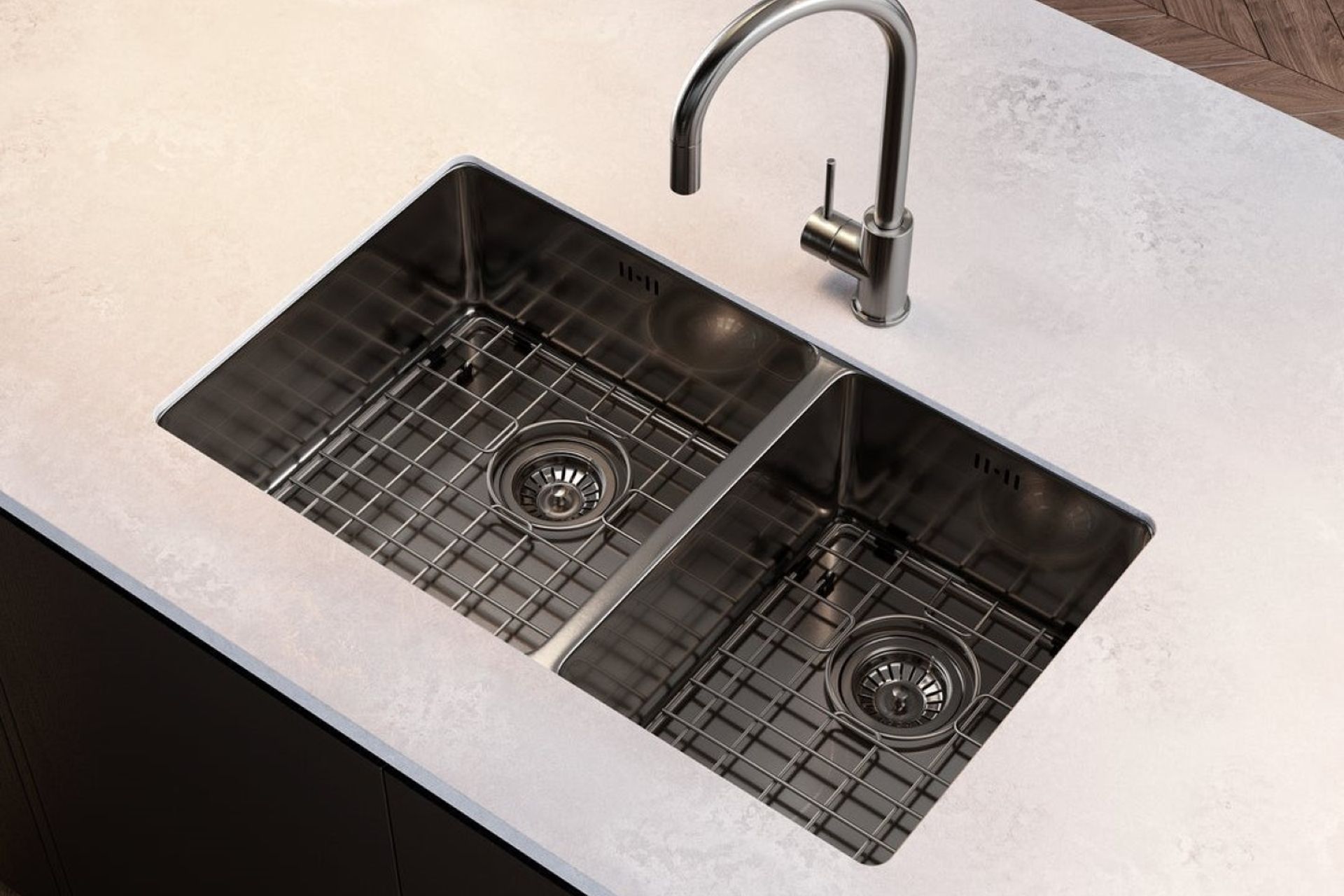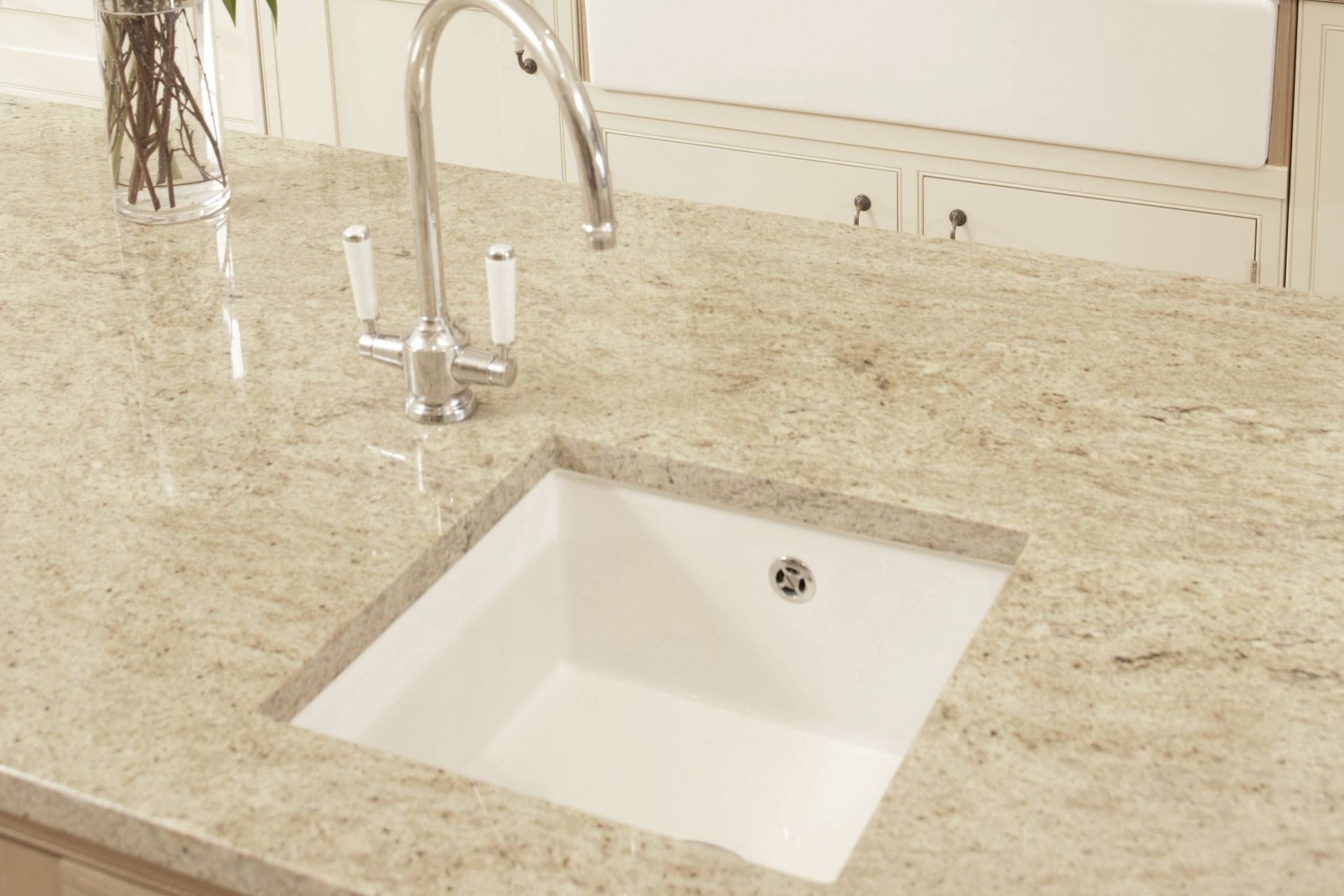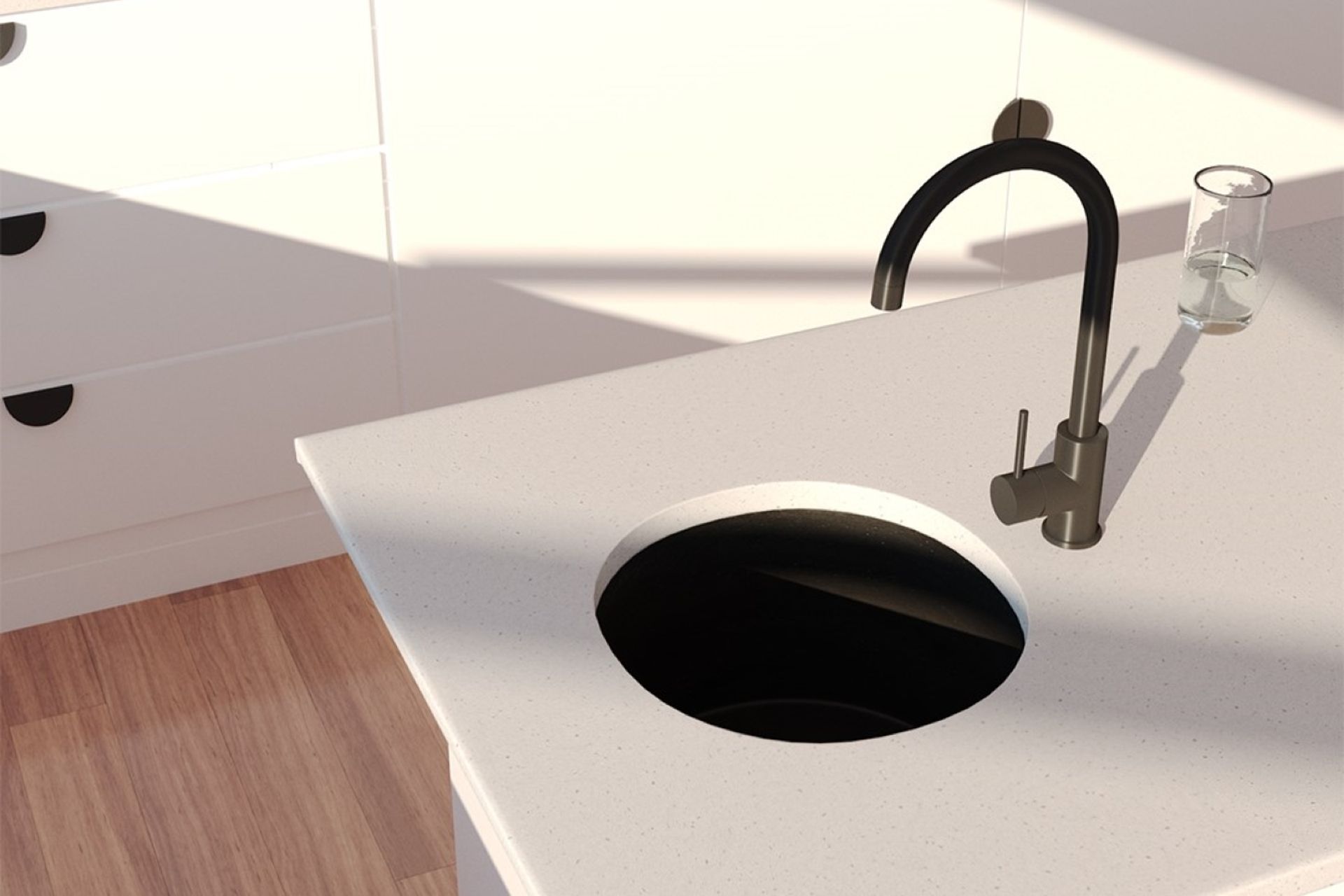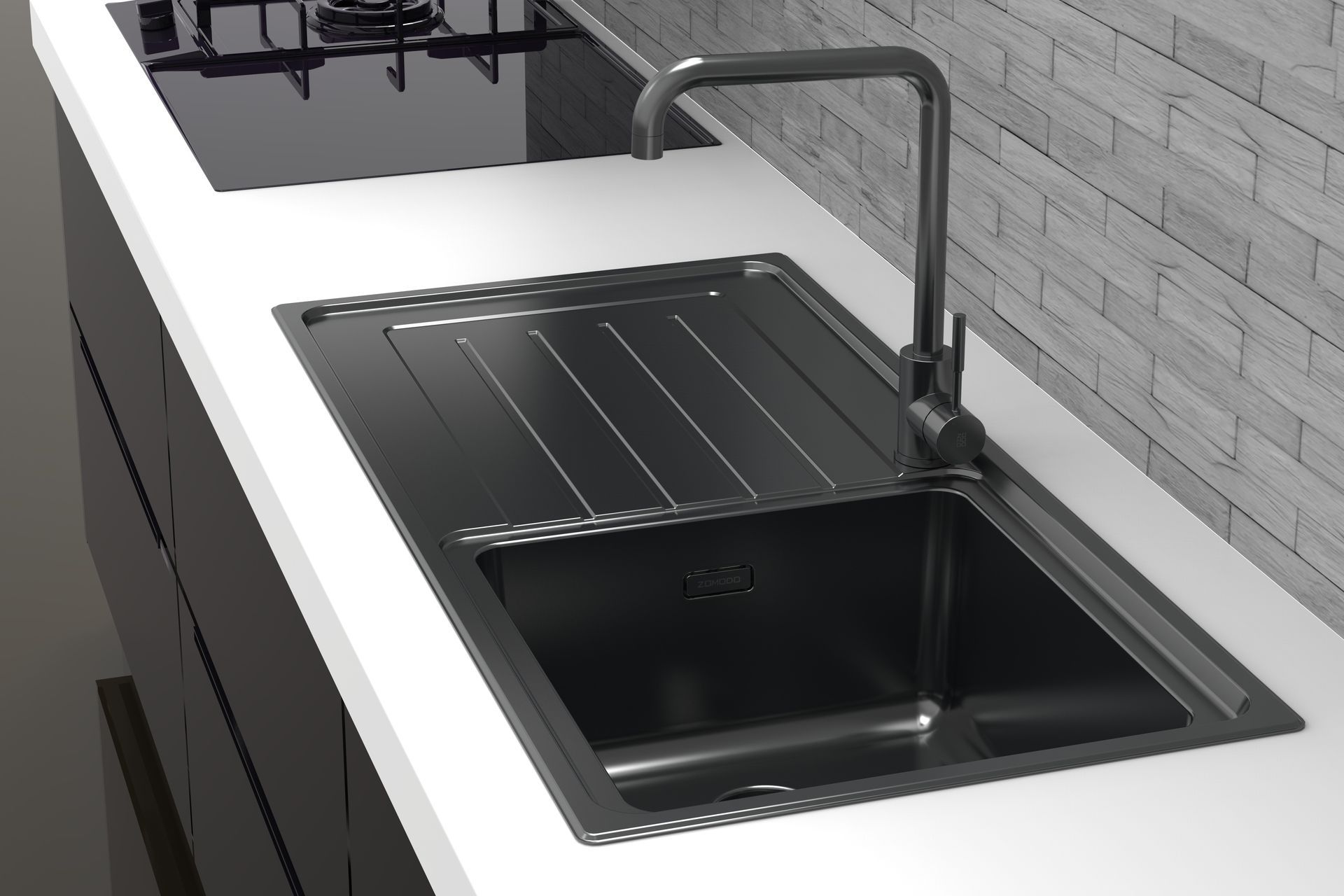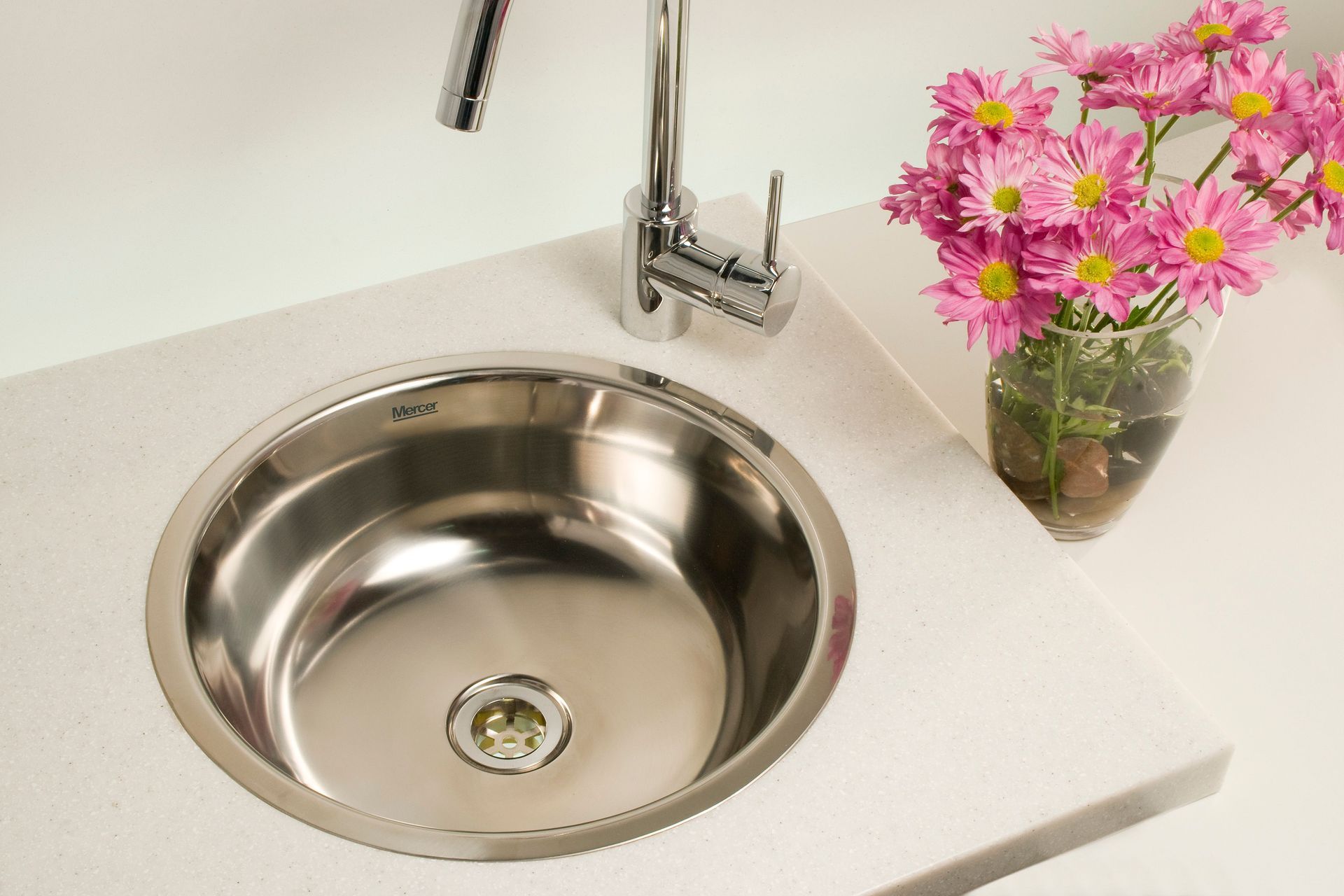Stylish kitchen sink options and why you should (or shouldn't) choose them
Written by
30 May 2024
•
9 min read
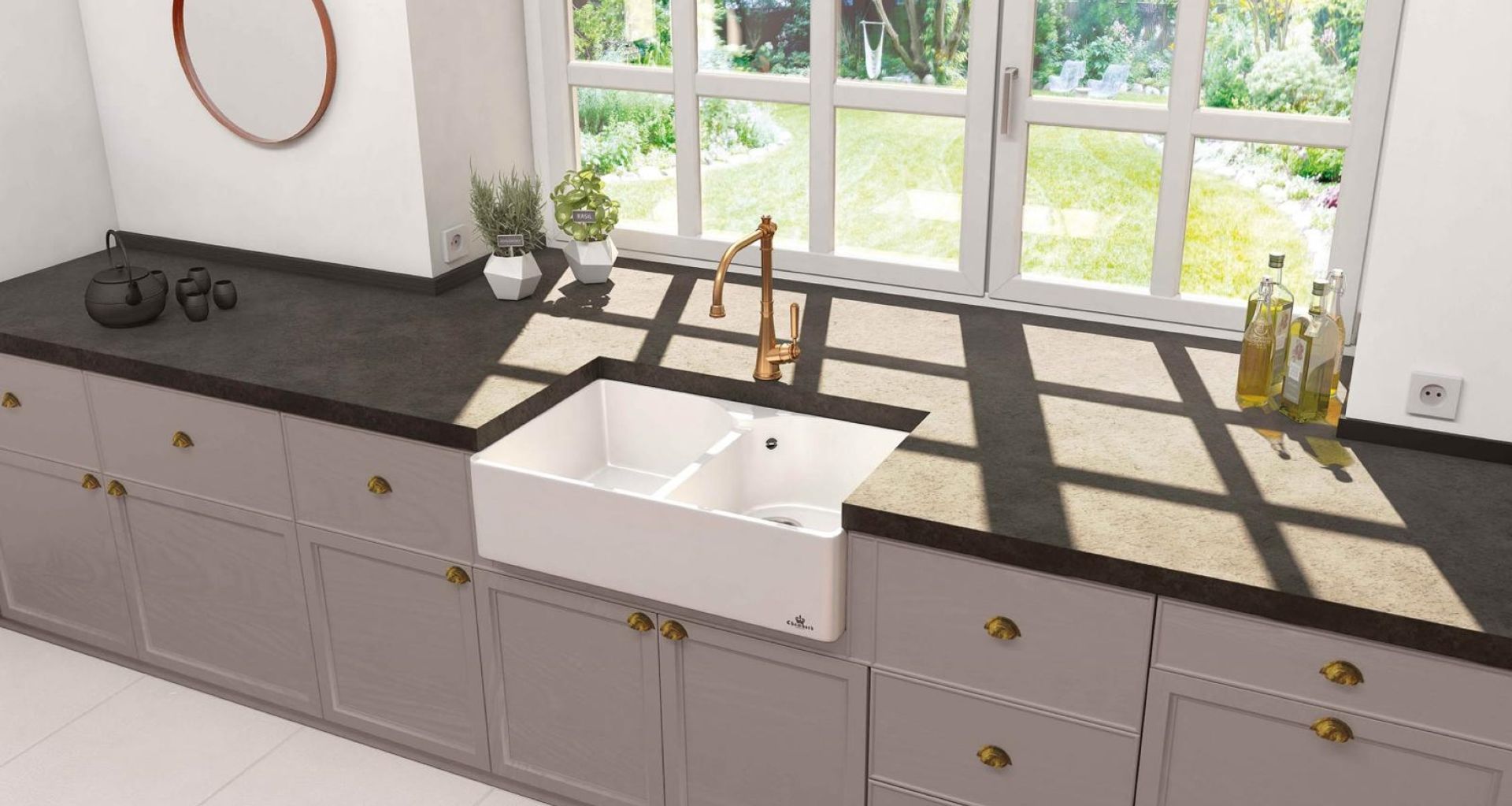
The number of kitchen sinks available on the market in New Zealand is vast, from basic drop-in stainless steel sinks to deluxe fireclay farmhouse sinks (and plenty of others in between). Understanding exactly what you want and need takes time but with all the essentials in front of you, it becomes a much easier process to find something that works on multiple levels.
1. Drop-in sinks
A drop-in sink, also called a top-mount sink, is a type of sink that is installed by being dropped into a pre-cut hole in the kitchen countertop. The sink's rim sits on top of the countertop surface, providing support and creating a visible edge around the sink. This design makes it relatively easy to install and replace.
Pros:
- Easy installation: Can be installed without professional help, making it a cost-effective choice.
- Diverse options available: Available in a wide range of materials, sizes, and styles.
Cons:
- Cleaning challenges: The visible rim can collect debris and grime around its edges, which can be difficult to clean.
- Appearance: Some find the exposed rim less visually appealing compared to other options.
2. Undermount sinks
An undermount sink is installed beneath the countertop, with its edges attached to the underside of the countertop material. This design creates a seamless, streamlined look and allows for easy cleaning, as there are no visible rims or edges to catch debris. It typically requires a solid countertop material like granite or quartz for proper support.
Pros:
- Seamless look: Offers a sleek, modern appearance with no visible rim.
- Easy cleaning: Allows for easy wiping of debris directly into the sink without obstruction.
Cons:
- Complex installation: Requires professional installation, which can be more expensive and time-consuming.
- Support requirement: Needs a solid countertop material like granite or quartz for proper support.
3. Farmhouse sinks
A farmhouse sink, also known as a butler sink or a front apron sink, features a deep, wide basin with an exposed front that extends beyond the edge of the surrounding kitchen cabinetry. It provides ample space for washing large pots and pans and offers a distinctive, traditional look that suits rustic kitchen designs. The front-facing feature can be more comfortable for prolonged use, as it allows you to stand closer to the sink.
Pros:
- Deep basin: Offers ample space for washing large pots, pans, and other kitchen items.
- Rustic look and comfort: Provides a charming, rustic look and the forward-facing design allows you to stand closer to the sink for prolonged use.
Cons:
- High costs: Generally more expensive due to the size, design, complex installation and custom cabinetry requirements.
- Potential for splashing: The front design can sometimes lead to more water splashing outside the sink.
4. Single-bowl sinks
Single basin sinks feature one large, uninterrupted basin without any dividers. This design provides a spacious area for washing large items like pots, pans, and baking trays, making it ideal for tasks where space is required. It is commonly found in modern and minimalist kitchen designs for its simplicity and functionality.
Pros:
- Spaciousness: Offers plenty of room for washing large pots and pans.
- Contemporary styling: Provides a clean, minimalist look that suits modern kitchen designs.
Cons:
- Less organisation: Lacks the ability to separate tasks at once, such as washing and rinsing.
- Can increase water usage: Can use more water to fill for soaking or washing compared to smaller, divided sinks.
5. Double-bowl sinks
A double bowl sink features two separate basins, allowing for multi-tasking in the kitchen. It's great for dividing tasks, such as washing dishes in one bowl while rinsing or drying them in the other. It provides versatility and organisation and is a popular choice in New Zealand for those who handle a variety of kitchen tasks simultaneously.
Pros:
- Versatility: Allows for multi-tasking, such as washing dishes in one bowl while rinsing or drying in the other.
- Organisation: Helps keep different tasks separate, making kitchen work more efficient and even more hygienic with respect to food preparation.
Cons:
- Smaller basins: With two bowls in the design, they are usually smaller than a single bowl sink
- Larger in size: They are larger overall, requiring more counter space which might not suit small kitchens.
6. Square sink
A square kitchen sink features a modern, angular design with straight sides and a flat bottom, offering a sleek and contemporary look. Its geometric shape increases the usable space within the sink, making it ideal for washing large items and maximising efficiency in small spaces. This style is popular in modern and minimalist kitchens for its clean lines and distinctive appearance.
Pros:
- Modern aesthetics: Offers a sleek, distinctive and contemporary look that complements modern and minimalist kitchen designs.
- Maximises space: The straight sides and flat bottom maximise the usable space within the sink, making it ideal for washing large items.
Cons:
- Cleaning corners: The corners can be harder to clean compared to rounded sinks, potentially trapping debris and grime.
- Water drainage: Flat bottoms may not drain as efficiently as those with a slight slope, possibly leading to standing water.
7. Round sink
A round kitchen sink features a circular design with curved sides and a smooth, bowl-like appearance. This style is often used in smaller kitchens or as a secondary prep or bar sink due to its compact size. The curved shape makes it easy to clean and adds a unique, stylish element to the kitchen, blending well with both traditional and modern designs.
Pros:
- Compact size: Ideal for small kitchens, bar areas, or as a secondary prep sink.
- Stylish design: Adds a unique and elegant touch to the kitchen, suitable for both traditional and modern styles.
Cons:
- Limited space: Smaller basin may not accommodate large pots and pans, limiting its functionality for heavy-duty kitchen tasks.
- Specialised use: Often used as a secondary sink rather than the main kitchen sink, so may not be a priority for all.
8. Sink with a drainage area
A sink with a drainage area, often called a drainboard sink, features an integrated section to the side of the sink, designed for drying dishes, draining washed vegetables, or catching excess water. It typically includes grooves or a slight slope to guide water back into the sink, preventing countertop water pooling. They are incredibly handy, especially for busy households where dishes are often left to drip dry.
Pros:
- Drying space: Provides a dedicated area for drying dishes, draining vegetables, or handling wet items without needing additional countertop space.
- Water management: Grooves or slopes direct water back into the sink, preventing water from pooling on countertops and keeping the kitchen area cleaner.
Cons:
- Reduced basin size: The drainage area takes up space that could otherwise be used for a larger, or additional basin.
- Cleaning: The grooves or sloped areas can be harder to clean and may accumulate grime over time.
9. Integrated sink
An integrated sink is seamlessly built into the countertop, crafted from the same material for a uniform, continuous appearance. This design eliminates seams and edges, making cleaning easier and enhancing the sleek, modern aesthetic of the kitchen. Integrated sinks are typically custom-made from materials like solid surface, quartz, or concrete, ensuring a perfect match with the countertop.
Pros:
- Sleek design: Provides a sleek, modern look with no visible seams or edges, enhancing the overall aesthetic of the kitchen.
- Customisation: They are often custom-made solutions, tailored to your specifications and preferences.
Cons:
- High upfront cost: Typically more expensive due to the custom fabrication and materials used.
- Difficult repairs: If damaged, repairs can be more difficult and expensive compared to traditional sinks, sometimes requiring complete replacement of the sink and countertop section.
10. Prep or bar sink
A prep or bar sink is a small, secondary sink typically installed in a kitchen island, wet bar, or outdoor kitchen area. Designed for tasks like food preparation, rinsing vegetables, or serving drinks, it provides additional functionality and convenience. Its compact size makes it ideal for areas with limited space, offering a practical and efficient solution.
Pros:
- Additional functionality: Provides a convenient, secondary workspace for food preparation, rinsing, or drink service.
- Space-saving: Compact size fits well in small areas such as kitchen islands, wet bars, or outdoor kitchens.
Cons:
- Limited Use: Smaller size may not accommodate larger items or be suitable for all kitchen tasks.
- Extra Cost: Adds to the overall cost of kitchen remodelling or installation due to the need for additional plumbing and fixtures.
What about the different types of materials?
As well as a variety of types, kitchen sinks are available in a variety of materials, each offering unique traits and benefits. The main types include:
- Stainless steel sinks: Popular for their durability, affordability, and resistance to heat and stains.
- Granite composite sinks: Provide a sophisticated look and are highly resistant to scratches and chips, though they are heavier and more expensive.
- Ceramic (or porcelain) sinks: Offer a classic, smooth finish and are easy to clean, but they can be prone to chipping.
- Cast iron sinks: Coated with enamel, are extremely durable and offer a glossy finish but are heavy and require sturdy cabinetry.
- Acrylic sinks: Lightweight and affordable, though less durable and more prone to scratching and heat damage.
- Fireclay sinks: Known for their strength and traditional farmhouse style.
- Copper sinks: Add a unique, rustic charm with natural antimicrobial properties.
How much do kitchen sinks cost in New Zealand?
The cost of a kitchen sink in New Zealand can vary widely depending on the type, material, and brand. Basic single bowl stainless steel sinks can start from around $200 making them an affordable option for many homeowners. Double bowl sinks will usually start at around $300.
Changing the material from stainless steel usually means a step up in price. Granite composite sinks, for example, start from around $600 while ceramic sinks are typically priced from $800 but can easily cost more than this.
High-end options, like a farmhouse sink, are regularly priced from $1,500 due to their size, styling and materials used.
You'll also need to pay for professional installation in most situations which can cost anywhere from $200 - $500 and perhaps more depending on the complexity of the job.
Some excellent sink options to consider for your home
With the types, materials and costs of kitchen sinks discussed, you now have all the fundamentals covered to make an informed decision. Whether it's a basic stainless steel sink or a luxurious double basin sink made out of fireclay, you'll be able to find something that fits your budget, decor and lifestyle.
Related article: How to choose kitchen wall tiles that look great and last
